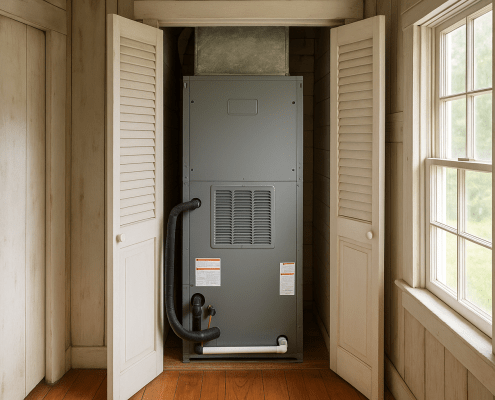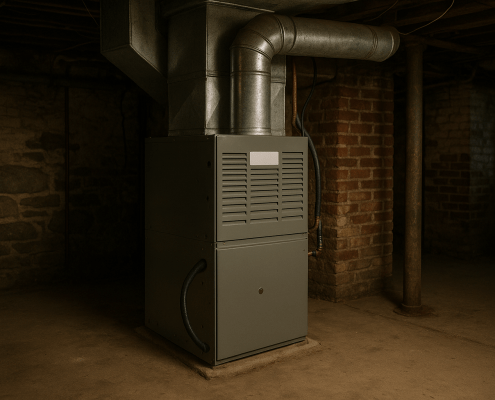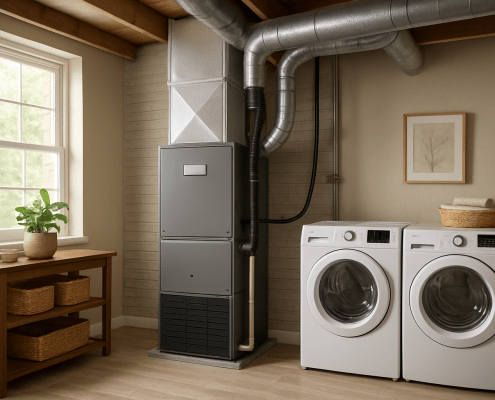What to Do When Your Central AC Outdoor Unit Isn’t Turning On
Steven E / Monday June 30, 2025
There’s nothing more frustrating than a hot day and a central air conditioner that suddenly stops working. If the indoor unit is blowing warm air or seems to be running, but the outdoor condenser unit isn’t turning on, it’s time to roll up your sleeves and troubleshoot.
The outdoor unit houses the compressor and fan, two of the most important parts in the cooling process. When it doesn’t power on, your system can’t remove heat from your home, leaving you sweating and wondering what’s gone wrong.
Fortunately, this issue can be diagnosed and fixed without professional help. Below is a step-by-step guide focused on safe, effective actions to help you get your cooling back on track.
The information in this article may not apply to your specific appliance model. We recommend consulting your manufacturer’s documentation or contact us with any questions.
Check the Thermostat Settings
Before diving into the outdoor unit itself, confirm that your system is actually being told to turn on.
- Set the thermostat to cooling mode.
- Lower the temperature setting to at least 5°F below the current room temperature.
- Make sure the fan is set to “auto” or “on.”
If the thermostat is battery-powered, check or replace the batteries. If it’s wired, make sure the display is on and functioning.
Listen for Indoor Unit Operation
When the system is calling for cool air, the indoor blower should be runnin,g and you should hear the indoor fan or air movement from the vents.
If the indoor system is completely off, your problem might be with power to the entire HVAC system, not just the outdoor unit. If only the outdoor condenser is dead, continue with the next steps.
Inspect the Circuit Breaker
A tripped breaker is one of the most common reasons the outdoor unit won’t power on.
- Locate your home’s main electrical panel.
- Find the breaker labeled “AC,” “Outdoor Unit,” or “Condenser.”
- If it’s tripped (in the middle or “off” position), switch it fully off, then back on.
Tip: If it trips again after resetting, this signals a potential electrical short or faulty component.
Check the Outdoor Disconnect Box
Near the outdoor unit, you’ll find a disconnect box, a small gray panel mounted to the wall. It houses a fuse or a pull-out switch to cut power during maintenance.
- Open the disconnect cover.
- If it has a pull-out handle, remove it and reinsert it firmly.
- If it uses fuses, check for blown fuses. You can test them with a multimeter or replace them if you suspect failure.
Important: Always cut power at the breaker before inspecting fuses or electrical connections for safety.
Examine the Thermostat Wire Connections (Low-Voltage)
The outdoor unit relies on a signal from the thermostat to turn on. If that signal isn’t getting through, the contactor (a relay inside the outdoor unit) won’t engage.
- Remove the access panel on the outdoor unit (after turning off power).
- Look for two small low-voltage wires (often red and white or red and yellow) that come from the thermostat.
- Check for loose or corroded connections.
- If the wires are cut or appear damaged (chewed by rodents, for example), you may need to splice or replace them.
- Reconnect and secure any loose wires. Use wire nuts and electrical tape to protect the splice.
Inspect the Contactor for Failure
The contactor is a switch that allows high-voltage power to flow to the compressor and fan when your thermostat calls for cooling. If it’s stuck, pitted, or burnt, the outdoor unit won’t turn on.
- With the access panel off, locate the contactor, it usually looks like a small black box with metal tabs or prongs.
- Check for burn marks, melted plastic, or arcing (black soot).
- Gently press the contactor’s center button with an insulated screwdriver (only if you’re confident and have turned the system back on). If the unit powers up, the contactor may be defective.
- Replace the contactor with a matching model. Make sure you turn off the power completely before doing so.
Test the Capacitor
A dual run capacitor powers the compressor and fan motor. If the capacitor fails, the fan may not spin and the compressor won’t start.
Signs of a failed capacitor:
- The top of the capacitor is bulging or swollen.
- The fan hums but doesn’t spin.
- You smell a faint burnt odor.
What to do:
- Use a multimeter with a capacitance setting to test the capacitor.
- If it’s failed, buy a replacement with the exact same µF (microfarad) and voltage rating.
Pro Tip: Always discharge the capacitor by shorting the terminals with a screwdriver (wear rubber gloves) before removing it.
Check the Fan Motor
If the compressor runs but the fan doesn’t, the unit may overheat and shut down. You may hear a humming sound or notice warm air around the unit.
- Turn off power to the unit.
- Try spinning the fan blade with a stick or screwdriver. If it spins freely, the motor may be electrically faulty.
- If the fan feels tight or doesn’t turn easily, the bearings may be seized.
- Replace the fan motor if it no longer runs.
Inspect for Debris or Ice Around the Unit
A central AC unit won’t function properly if airflow is restricted or the system is frozen.
- Clear away any leaves, weeds, or debris blocking the condenser coil.
- If you see ice on the refrigerant lines, shut the system off and let it thaw completely.
- Dirty coils or blocked airflow can cause pressure buildup and prevent startup.
Once defrosted, clean the outdoor coil with a hose and soft brush to restore airflow.
Replace the Air Filter
Yes, this one’s inside, but it matters. A clogged air filter can restrict airflow so much that it causes the system to overheat or shut down.
- Locate the filter at the air handler or return grille.
- Replace it if it’s dirty, collapsed, or older than 2–3 months.
- Restart the system and monitor performance.
Where To Find Us
If you need any replacement parts for your appliances, you can enter your model number at AppliancePartsPros.com to locate and order them quickly. Most orders arrive in just two business days, and we have tons of great information in our repair help section and YouTube videos to help you troubleshoot.
Stay connected with the latest DIY tips, tutorial videos, and repair guides by following us on Facebook, Instagram, and Twitter. We love hearing about your repair stories and successes. If you need more help or want personalized guidance, feel free to reach out. We’re ready to help you take on your next project with confidence!
With nearly a decade of experience in providing top-notch customer service regarding appliance parts and repair, Steven enjoys sharing practical advice, troubleshooting tips, and interesting information to help readers stay informed.





